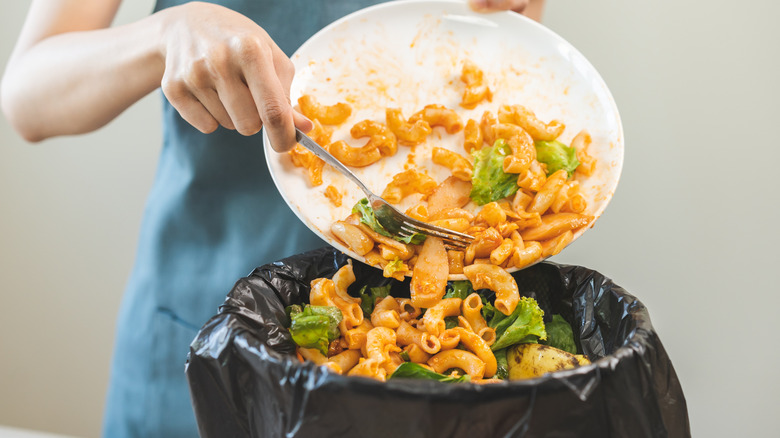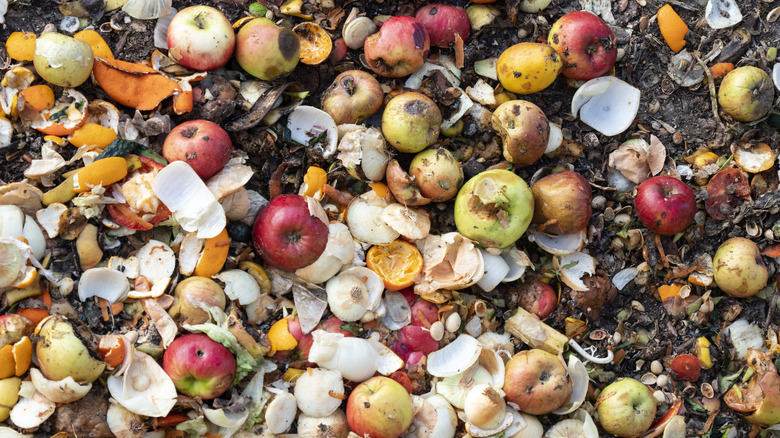The US State That Wastes The Least Food
People are hyper-aware of the impacts consumption has on the environment and often take small steps to combat things like food waste in response. However, not all states are equal when it comes to mitigating food waste. The U.S. state that wastes the least amount of food is nestled in the corner of the Pacific Northwest — Washington. A study by the University of California-Davis and ReFED shows that Washington's food waste comes out to 293 pounds of food waste per person per year. That may seem like a lot, but when compared to the state with the highest amount of food waste, Arizona (1,025 pounds of food waste per person per year), it's pretty good.
Washington's food waste levels are actually below expectations for the population and infrastructure of the state. This incredible feat is accomplished through consumers knowing how to stop produce from going to waste in their refrigerators. The state has a high number of composting facilities which, in 2012, composted a whopping 1.2 million tons. Washington also makes good use of food banks, which accept food donations from sources like grocery stores, farmers, and members of the community.
The impact of food waste
Washington's proactive handling of reducing food waste is, unfortunately, a less common approach across the United States. Sure, we can all stop buying the groceries we're most likely to waste, but the impacts of food waste are still present. The United States has over 44 million people experiencing food scarcity, while the food wasted comes out to one pound per day per household. Washington can serve as a good example for other states in terms of successful food waste reduction and prevention.
If the United States redirected the resources expended annually on food that goes to waste, it could be utilized for other needs around the country, including aiding or ending such high levels of needless food insecurity. The water and energy used to create wasted food over one year could be used in over 50 million homes. The land taken up by food that goes to waste is another significant cost. If all of the wasted food were grown side by side, it would take up an area the same size as California and New York combined. This land could be used for other needs or left to exist in its natural state. In the meantime, we can all be responsible for our own food waste reduction through practices like composting and buying only what we will consume.

